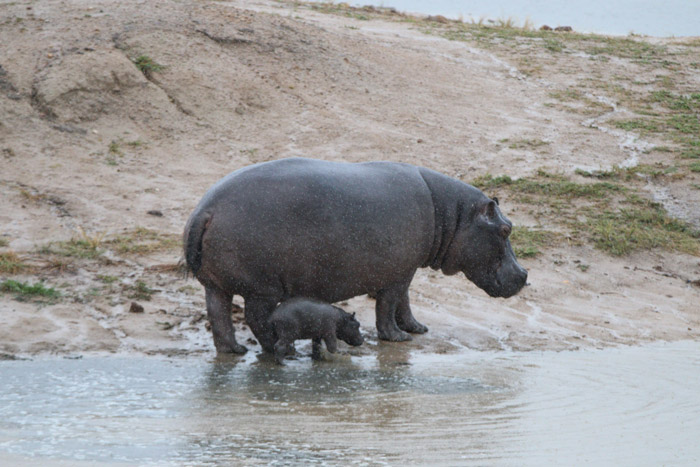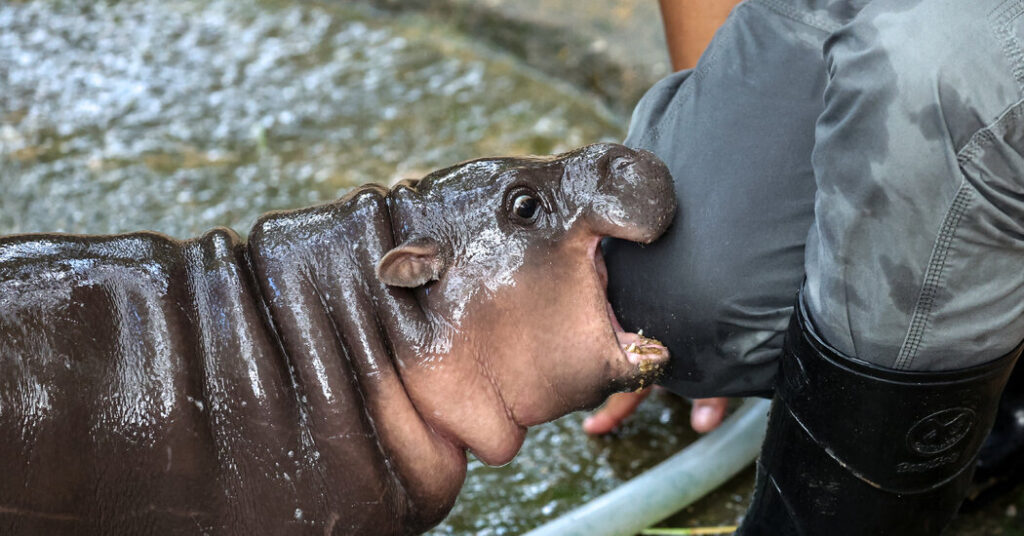Do hippos eat their young
Do hippos eat their young? Infant hippos, or calves, are frequently slaughtered by dominant adult males; what is the rationale behind this behavior? The rationale behind the killing of newborn hippos by adult males is as follows;
Female hippos have a gestation period of 8 months, and when they are ready to give birth, they consistently separate from the pod. The females establish a separate territory and remain there until parturition. Following birth, once the calf is capable of fleeing from danger, the mother must return the calf to the remainder of the pod, which is often met with resistance.

Do hippos kill their young? Dominant males, or bulls, tend to dislike the younger males as a strategy to diminish competition for future dominance within the hippo group. The mother must combat and safeguard her offspring, although at times she may fail, resulting in fatalities. Occasionally, the mother may relocate with the offspring to establish a new dwelling.
What to Know About Baby Hippos and Adults
Do hippos eat their young, Hippos are semi-aquatic creatures that predominantly inhabit aquatic environments. They allocate approximately 16 hours daily to being submerged in water.
A juvenile hippopotamus is referred to as a calf, the male as a bull, and the female as a cow.
They are regarded as the most lethal big terrestrial mammal globally. It is believed that hippos cause approximately 500 fatalities annually in Africa.
The arid season is optimal for female conception.
Female hippos possess a gestation duration of 8 months, resulting in the delivery of a single calf per instance. Subsequently, they devote the following eight months to nurturing the calf.
At birth, the calf weighs between 23 and 50 kg. An average female weighs approximately 1,400 kilograms, while an average male weighs between 1,600 and 4,500 kilos.

If you are on a safari in Uganda and wish to observe hippos, these locations are the most recommended to visit.
Kazinga Channel within Queen Elizabeth National Park.
Kazinga Channel is a premier destination for boat cruises during wildlife safaris in Uganda. The 40-kilometer channel linking Lakes Edward and George in Queen Elizabeth National Park serves as an excellent habitat for hippopotamuses. The canal possesses the highest density of hippos in all of Africa, featuring hundreds of hippos in the water.
In Queen Elizabeth National Park, hippos can be observed in the Ntungwe River in the Ishasha region, renowned for its tree-climbing lions.
Murchison Falls National Park
A boat tour in Murchison Falls National Park offers an excellent opportunity to observe hippos. Hippos can be observed on a Nile River boat trip, on a downstream journey to the Albert Nile, and even during a game drive near the Albert Nile.
Lake Mburo National Park
A boat tour on Lake Mburo within Lake Mburo National Park offers an excellent opportunity to observe hippos during a wildlife safari in Uganda. Hippos can be observed during any of the park’s boat cruises, however their numbers are fewer compared to those in the Kazinga Channel or Murchison Falls National Park.
Semliki Wildlife Reserve
In the Semliki Wildlife Reserve adjacent to Semliki National Park, hippos can be observed in the Semliki River. The river traverses both Uganda and the Democratic Republic of Congo. Nonetheless, the hippo population along the Semliki River has significantly diminished due to the hostilities in the Democratic Republic of Congo.
Uganda tours provide numerous opportunities; thus, it is recommended for travelers on extended safaris in Uganda to integrate wildlife safaris with chimp trekking, bird watching, or gorilla trekking experiences. Contact Us
